
Clam chowder
delicious. magazineThere’s no soup more comforting than a proper clam chowder – made with chorizo, sherry, fresh clams and cream. Serve with crusty bread to soak up every last drop. And if you want to make this recipe a...
- Gluten-Free
Download Stashcook Now. Get the best meal planning app for your family.

Clam chowder is a creamy soup that's like a warm hug in a bowl. It's filled with tender clams, cozy potatoes, and sometimes sweet corn or crispy bacon bits. Each spoonful is rich and hearty, perfect for dipping bread into or just enjoying on its own on a chilly day.
Discover 101 unique Clam Chowder recipes. Each with it's own twist on the recipe. Read our review top find our top Clam Chowder recipes out there.

There’s no soup more comforting than a proper clam chowder – made with chorizo, sherry, fresh clams and cream. Serve with crusty bread to soak up every last drop. And if you want to make this recipe a...
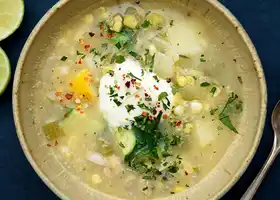
Summer corn and clam chowder is like a clambake in a bowl, emphasizing the sweetness of each ingredient. To give the chowder a somewhat Italian slant and to magnify the corn flavor, a handful of polen...

Being from New England originally I always appreciated a good rich clam chowder. But living in the Southwest the past 35 years, I have learned to appreciate the Sonoran flavors. This recipe blends a c...
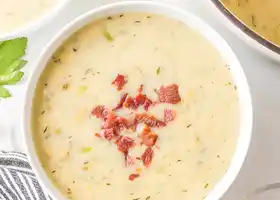
Perfect for fans of clam chowder who are looking for a healthier version!
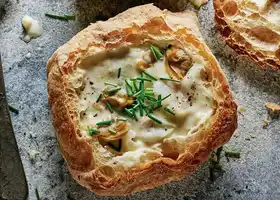
Rick Stein's recipe for Clam Chowder, as seen on his BBC series, The Road to Mexico, is served in a crusty sourdough bowl, the traditional Californian way.
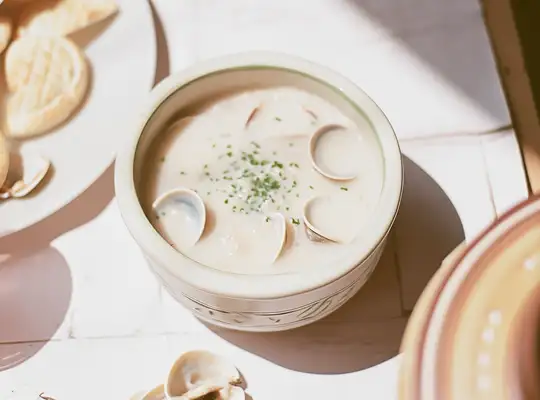
Quick and easy recipes you can make in under 15 minutes.
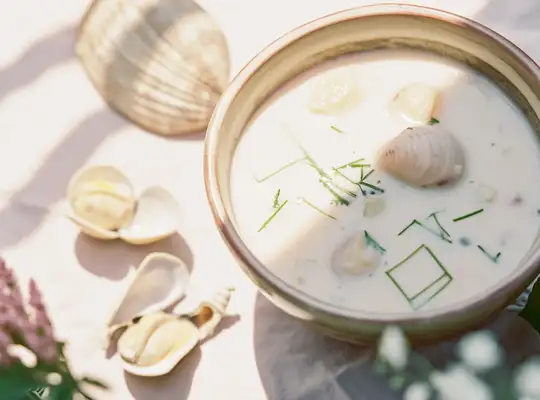
Recipes that can be made in less than 30 minutes.
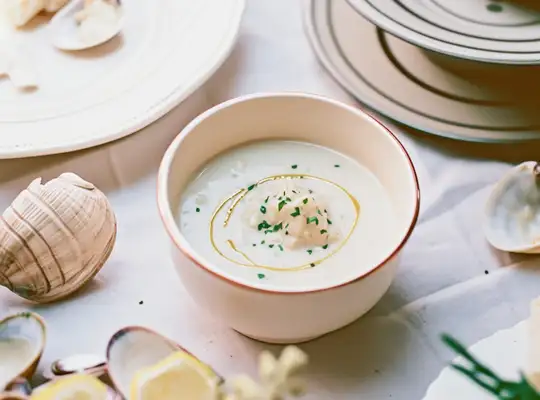
Recipes that do not contain dairy products.
The Clam Chowder from Delicious. magazine is a bold take on the traditional chowder, infusing it with a spicy kick from hot chili powder and smoked paprika. The addition of chorizo adds depth and a smoky flavor that complements the clams beautifully. The use of white wine, sherry, and lemon zest brings an acidity that cuts through the richness of double cream and butter, making this version stand out for those who enjoy a more complex flavor profile.
NYT Cooking's Corn and Clam Chowder With Zucchini and Herbs is like summer in a bowl. It combines fresh corn, zucchini, herbs, and polenta to create a lighter yet satisfying dish. This recipe stands out for its use of lime halves squeezed at the end; this citrus note elevates the natural sweetness of the clams and vegetables. It's an excellent choice for those who prefer their chowder brimming with garden-fresh ingredients.
Taste of Home offers an innovative Pressure-Cooker Sonoran Clam Chowder that packs southwestern flavors into a comforting bowl. With peppered bacon strips, green chiles, taco seasoning, and cilantro playing pivotal roles alongside traditional clam chowder elements like potatoes and cream, this recipe is perfect for those looking to experiment with regional twists without spending hours in the kitchen.
Each clam chowder recipe brings its unique flair to this classic comfort food: Delicious. magazine goes bold with spices; NYT Cooking keeps it light with fresh produce; while Taste of Home takes us on a quick trip to the Southwest with its pressure-cooker method. Whether you crave innovation or tradition in your soup bowl will guide your choice among these delightful variations on clam chowder.
For clam chowder, the best type of clams to use are hard-shell clams (also known as quahogs) from the East Coast of the United States. The smaller cherrystone or littleneck clams are a good choice because they tend to be more tender and flavorful. If you're on the West Coast, you can also use Manila clams, which have a sweet taste.
If fresh clams are not available, you can also use canned minced or chopped clams. However, keep in mind that fresh will usually provide a better flavor and texture for your chowder.
Here's how to prepare them:
Remember that overcooking can make clams tough and chewy, so add them towards the end of cooking time if they're pre-cooked (like canned) or just long enough to cook through if they're fresh.
Certainly! In traditional clam chowder recipes, heavy cream is often used to create a rich and creamy texture. However, if you're looking for a lighter option, you can definitely substitute it with other ingredients. Here are some alternatives:
Remember that using these substitutes may alter the final taste and consistency of your clam chowder slightly compared to using heavy cream, but they are viable options for creating a healthier version of this classic dish.
If your clam chowder is too thin and you're looking to thicken it, there are several methods you can use. Here are some options:
When thickening soup:
Remember that clam chowder will also naturally thicken upon cooling, so consider letting it sit for a bit before deciding if it needs additional thickening agents!
Yes, you can freeze clam chowder for later use. However, there are some considerations to keep in mind to ensure the quality of the soup when thawed and reheated. Here's how you can do it:
Note: Clam chowder that contains potatoes may have a change in texture since potatoes can become grainy after freezing and thawing; consider this if texture is important for your enjoyment of the dish.
Remember that while freezing extends shelf life, it's always best practice to consume food sooner rather than later for optimal taste and safety!
Seamlessly add your favorite Clam Chowder recipes to your personal digital cookbook.
But that's just the start! Add recipes from cookbooks and magazines too. Stashcook's AI technology extracts recipes right off the page with just one click.
With Stashcook, organize all your recipes in one convenient place and master meal planning like a pro. Join the thousands already making meal planning simpler and more enjoyable.
Download Stashcook for FREE today and begin your journey to effortless meal planning.
Email:
hello@stashcook.com© Copyright 2024 Stashbox Ltd. All rights reserved.